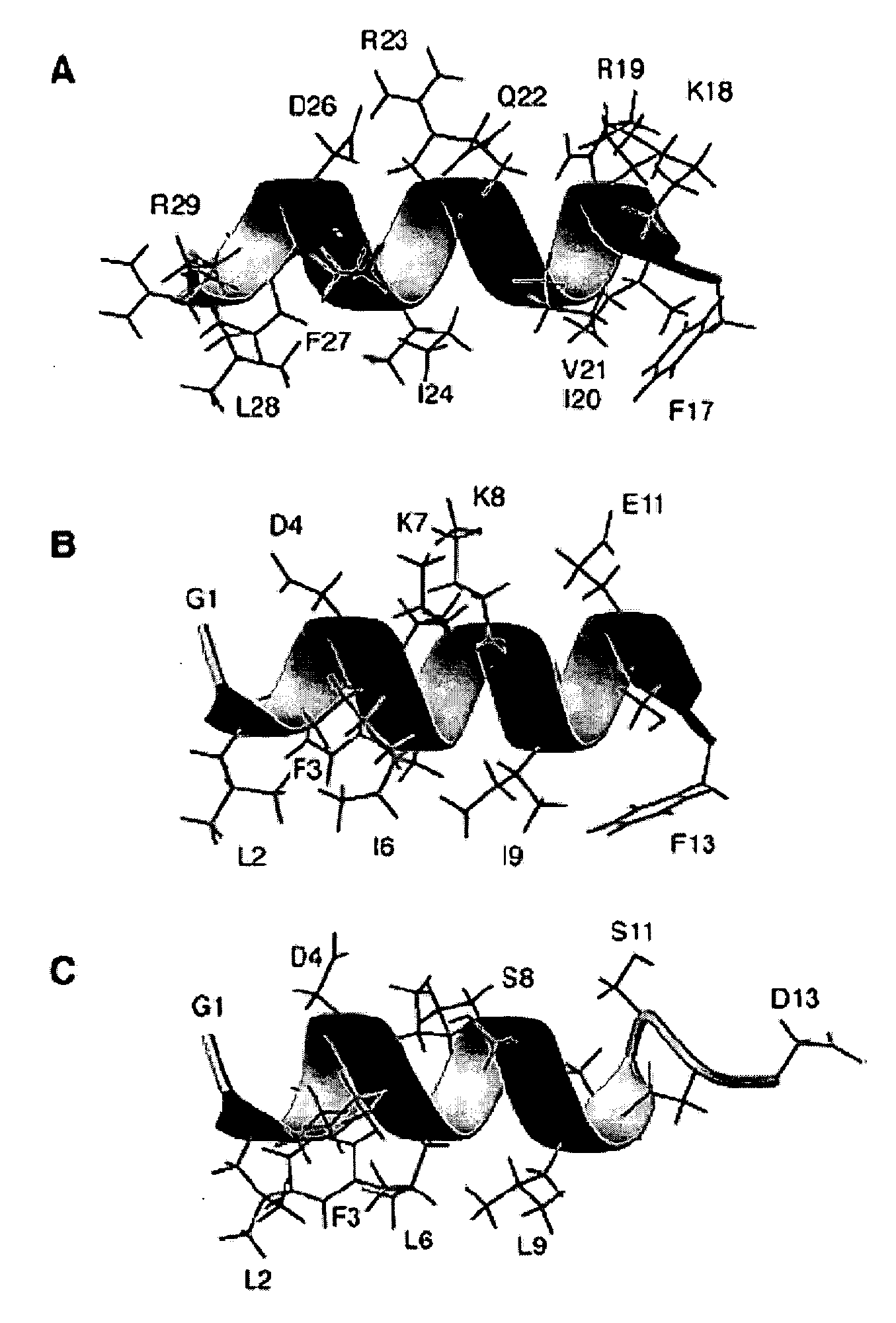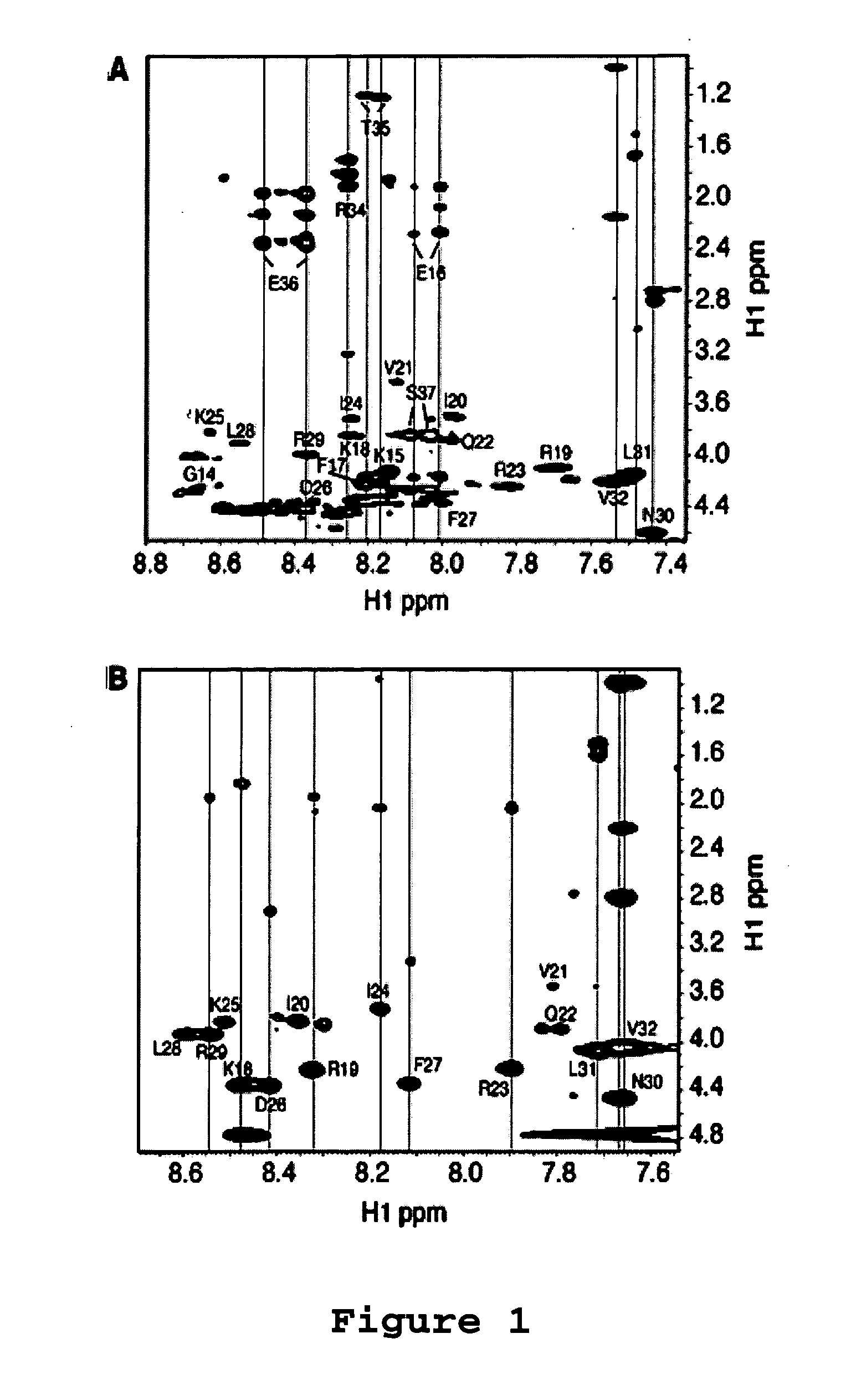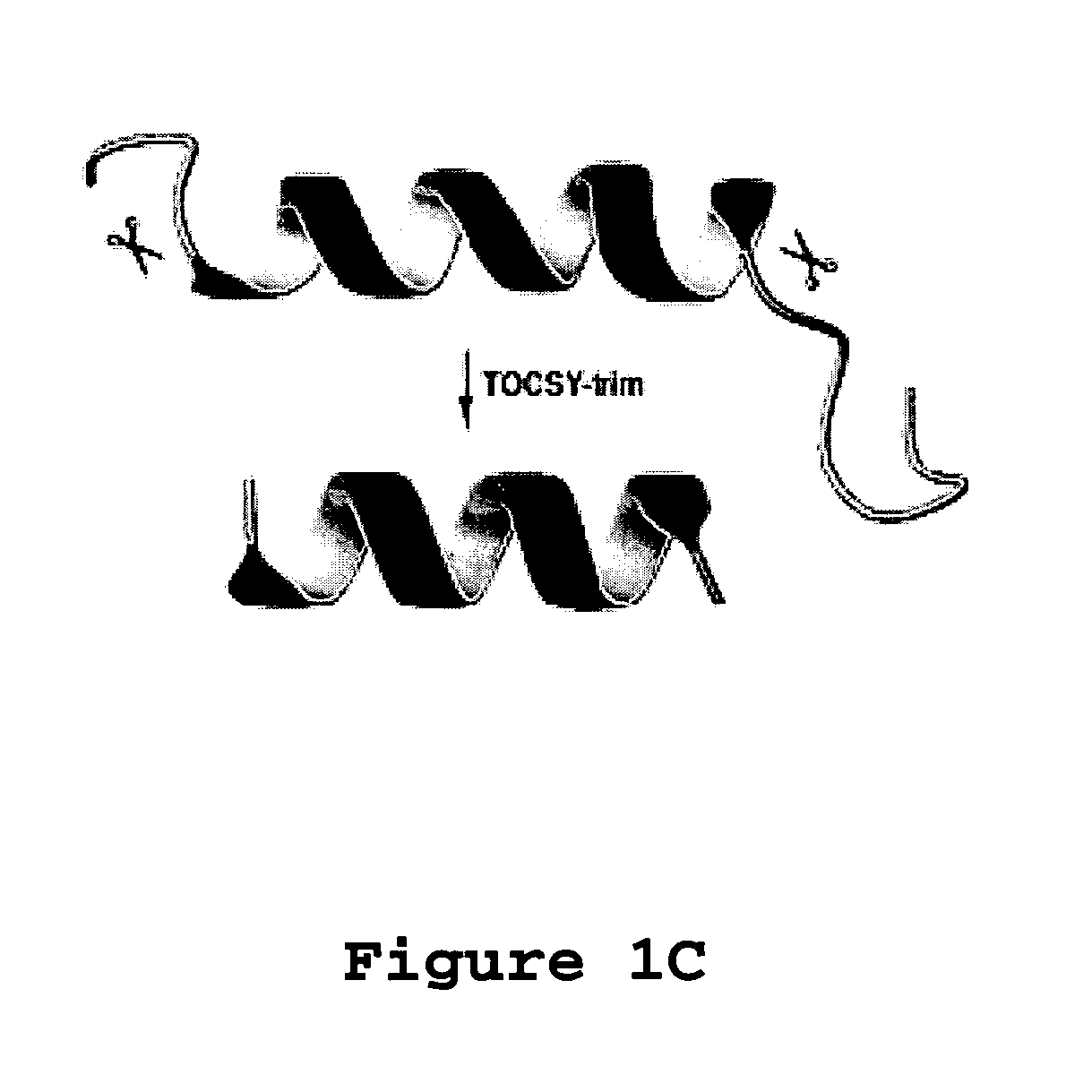Antimicrobial peptides and methods of identifying the same
a technology of antimicrobial peptides and peptides, which is applied in the field of antimicrobial agents and the treatment of bacterial infections, can solve the problems of ll-37 losing its ability to stimulate the host respons
- Summary
- Abstract
- Description
- Claims
- Application Information
AI Technical Summary
Benefits of technology
Problems solved by technology
Method used
Image
Examples
example 1
Materials and Methods
[0068]Antibacterial Assays. The antibacterial activity of the LL-37 peptides and its analogues was analyzed using the standard approach of microdilution (Wang et al. (2005) J. Biol. Chem., 280:5803-5811; Yu et al. (2002) J. Pept. Res., 60:1-9). In brief, a small culture of wild type E. coli K12 was grown overnight. A fresh culture was inoculated with a small aliquot of the overnight culture and incubated at 37° C. until the optical density reached the mid-logarithmic stage. The culture (90 μL each) was then diluted to an A600 of 0.001 and partitioned into a 96-well plate with 106 cells per well. The cells were then treated with 10 μL of the peptide at a series of levels (5 to 320 μM), allowing the minimum inhibitory concentration (MIC) measurement for each. Each peptide assay was repeated 3 times. The plate was then further incubated at 37° C. overnight (˜16 hours) and read on an Ultra Microplate Reader at 620 nm (Bio-TEK Instruments; Winooski, Vt.).
[0069]Antica...
example 2
[0100]Aurein 1.2 is an antimicrobial and anticancer peptide isolated from an Australian frog. Aurein 1.2 can be considered a model peptide for the following two reasons. First, aurein 1.2, from the Australian Bell Frog Lithoria aurea shows sequence homology to the membrane anchor (15 residues at the N-terminus, see Table 4) of the glucose-specific enzyme IIA from Escherichia coli (Rozek et al. (2000) Eur. J. Biochem., 267:5330-5341; Wang et al. (2000) J. Biol. Chem., 275:39811-39814; Wang et al. (2005) J. Biol. Chem., 280:5803-5811). Second, aurein 1.2 also shows sequence homology to a portion of the peptide sequence of human LL-37. The spacing between F17 and F27 in human LL-37 is identical to that between F3 and F13 in aurein 1.2. Further, a greater sequence similarity was achieved by reversing the sequence of the segment corresponding to residues 17-29 of LL-37 (see Table 4 wherein identical residues are bolded and semi-conserved residues relative to aurein 1.2 are underlined). T...
PUM
| Property | Measurement | Unit |
|---|---|---|
| pH | aaaaa | aaaaa |
| pH | aaaaa | aaaaa |
| pH | aaaaa | aaaaa |
Abstract
Description
Claims
Application Information
 Login to View More
Login to View More - R&D
- Intellectual Property
- Life Sciences
- Materials
- Tech Scout
- Unparalleled Data Quality
- Higher Quality Content
- 60% Fewer Hallucinations
Browse by: Latest US Patents, China's latest patents, Technical Efficacy Thesaurus, Application Domain, Technology Topic, Popular Technical Reports.
© 2025 PatSnap. All rights reserved.Legal|Privacy policy|Modern Slavery Act Transparency Statement|Sitemap|About US| Contact US: help@patsnap.com



